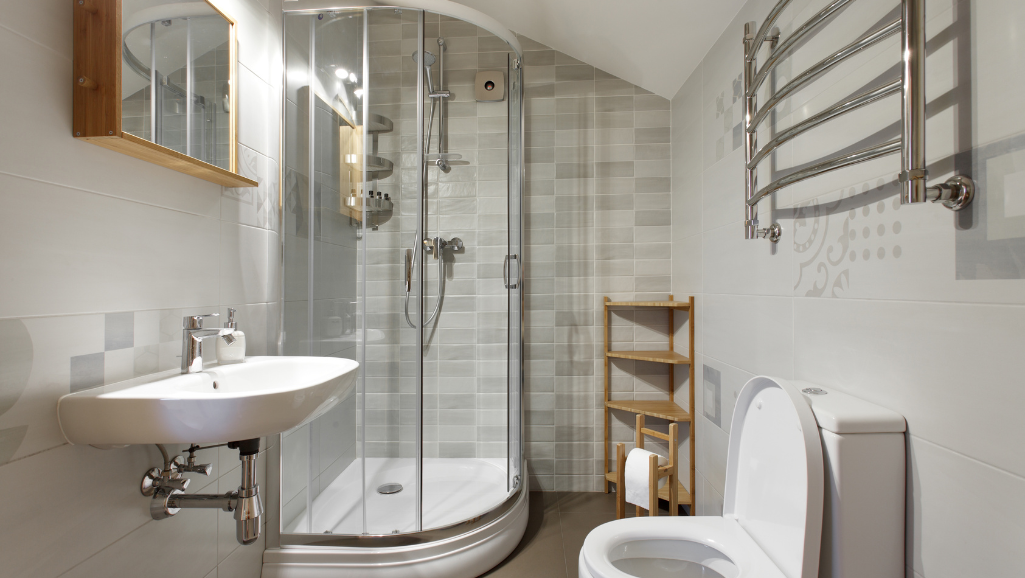Life’s demands can sometimes feel like too much to handle. Even the strongest people struggle when stress piles up. Studies show 74% of Americans feel unable to cope with daily pressures, according to the Cleveland Clinic. Sensory overload—constant notifications, news, and responsibilities—only makes it worse.
The good news? You don’t have to stay stuck. This guide offers science-backed strategies to help you regain control. From breathing exercises to long-term mental health habits, these tips work for anyone.
Your anxiety doesn’t define you. With the right tools, you can build resilience and find calm. Let’s explore how.
Key Takeaways
- Daily stress affects most people, but solutions exist.
- Sensory overload often worsens feelings of unease.
- Small, consistent changes create lasting relief.
- Professional support can make a big difference.
- Healthy routines, like those in morning habits, boost mental clarity.
Understanding Overwhelmed Anxiety
The human mind wasn’t built to handle constant bombardment from modern stressors. When your brain perceives threats—real or imagined—it redirects resources to survival mode. Digestion, memory, and even bladder control take a backseat to fight-or-flight responses.
How Anxiety Overwhelms the Mind and Body
Chronic stress alters your brain chemistry. Neurotransmitters like serotonin and dopamine get disrupted, causing “brain fog” and decision paralysis. Over time, the hippocampus—your memory center—can shrink by 10–15%.
This rewiring fuels a vicious cycle. A crowded room or loud noise spikes cortisol. Your heart races, palms sweat, and physical symptoms amplify fear. For some, this escalates into panic attacks—a feeling of doom with no clear trigger.
The Link Between Sensory Overload and Anxiety
When your five senses absorb more than your brain can process, chaos follows. Fireworks might trigger combat flashbacks in PTSD. For those with ADHD (65% of whom have a comorbid anxiety disorder), fluorescent lights or chatter can feel like assault.
The DSM-5 clarifies the line between normal stress and a diagnosed anxiety disorder. If thoughts of worry persist for months or disrupt daily life, it’s time to seek help. Your condition isn’t a life sentence—it’s a signal to rebalance your nervous system.
Signs You’re Struggling with Overwhelmed Anxiety
Your body and mind send signals when stress becomes too much. These warnings—often dismissed as fatigue or irritability—can escalate if ignored. Learning to spot them early helps you take action before they spiral.
Mental and Emotional Symptoms
Racing thoughts and catastrophic thinking are classic markers. You might fixate on worst-case scenarios or feel like your mind won’t slow down. Memory lapses, like forgetting appointments, signal cognitive overload.
Hypervigilance, or constant “scanning” for threats, drains mental energy. Some people describe dissociation—a fleeting sense of being outside their body during meltdowns. These symptoms often pair with mood swings or withdrawal from social activities.
Physical Symptoms You Shouldn’t Ignore
Your body reacts when your brain senses danger. Tension headaches, clenched jaws, and muscle stiffness are common. IBS flare-ups or tremors may also appear without warning.
Hyperventilation reduces CO2 levels, causing dizziness or numbness. Chest pains—reported by 83% of sufferers—can mimic heart attacks. Panic attacks often bring a pounding heart, sweating, and shortness of breath.
Danger signs need immediate attention: chest pain lasting over 5 minutes, fainting spells, or trouble speaking. These could indicate severe problems requiring medical help.
Common Triggers of Overwhelmed Anxiety
Recognizing what sparks unease is the first step toward managing it. Triggers range from loud environments to hidden genetic factors. By identifying them, you can tailor strategies to regain balance.
Environmental and Social Triggers
Daily life bombards us with stimuli that strain the nervous system. For 92% of autism patients, fluorescent lighting causes sensory overload. Traffic jams spike stress biomarkers by 300%, turning commutes into high-tension situations.
Other common triggers include:
- Social anxiety in crowds or performance settings
- Conflict-heavy environments (workplaces, family gatherings)
- Sudden changes like temperature shifts or loud noises
“Notification anxiety affects 58% of people, with constant pings keeping brains on high alert.”
Underlying Conditions That Worsen Anxiety
Genetics play a role—30–40% of generalized anxiety disorder (GAD) cases are hereditary. Comorbid conditions like depression create *perfect storms*, intensifying symptoms. High-risk jobs (healthcare, teaching) often amplify these effects.
Key factors include:
- ADHD’s overlap with sensory processing disorder
- PTSD’s hypervigilance to environmental things
- Sleep deprivation’s impact on emotional regulation
Understanding these triggers helps you build personalized coping plans. Small adjustments—like noise-canceling headphones or therapy—can make a big difference.
How to Manage Overwhelmed Anxiety in the Moment
Moments of high tension don’t have to spiral out of control. With simple, evidence-based techniques, you can pause your body’s stress response and reset. Whether it’s a racing heart or intrusive thoughts, these tools work in real-time.
Grounding Techniques for Immediate Relief
Grounding techniques anchor you to the present. Try the 5-4-3-2-1 method: Name 5 things you see, 4 you can touch, 3 you hear, 2 you smell, and 1 you taste. This sensory shift interrupts panic cycles.
For acute distress, the TIPP method helps:
- Temperature: Press an ice pack to your wrists or neck.
- Intense exercise: Do 30 seconds of jumping jacks.
- Paced breathing: Follow the 4-7-8 rhythm (inhale for 4, hold for 7, exhale for 8).
“Walking reduces cortisol 28% faster than sitting still—a 2-minute stroll can reset your mood.”
Breathing Exercises to Calm Your Nervous System
Diaphragmatic breathing activates relaxation. Place one hand on your belly, inhale deeply to expand it, then exhale slowly. Repeat for 90 seconds to lower your heart rate by 22 BPM.
Box breathing (equal inhales, holds, and exhales) is another powerful tool. Navy SEALs use it to stay focused under pressure.
The Power of Distraction and Movement
Physical action disrupts stress loops. “Movement snacks”—like shoulder rolls or calf raises—release tension during work. Fidget tools or a calming playlist also redirect focus.
Changing your environment helps too. Step outside, switch languages, or visualize a peaceful place. These small shifts create space to manage anxiety before it escalates.
Long-Term Strategies to Reduce Anxiety
Sustainable relief from stress comes from building habits that support your well-being. While quick fixes help in moments of crisis, lasting change requires consistent effort. Research shows combining treatment approaches—like therapy and mindfulness—boosts success rates by 45%.
Building a Self-Care Routine That Works
Start small. A 10-minute daily walk or journaling session can rewire your brain over time. Studies link omega-3-rich foods and hydration to lower stress levels. Prioritize sleep—just 30 extra minutes nightly improves emotional resilience.
Effective routines often include:
- Movement snacks: Stretching or yoga breaks during work
- Social connection: Weekly calls with supportive friends
- Mindfulness: Apps like Headspace for guided meditation
“CBT has a 60% remission rate for generalized anxiety disorder—proof that brains can learn new patterns.”
When to Seek Professional Help
Therapy isn’t for the weak—it’s skill-building for your mind. Consider a mental health professional if avoidance lasts over 2 weeks or substance use increases. The stepped care model guides next steps:
- Self-help resources (books, apps)
- Group therapy for shared experiences
- Individual CBT or EMDR for trauma
- Medication (e.g., SSRIs) if needed
Red flags like chest pain or suicidal thoughts need immediate help. Your first session might sound like: “I’ve felt on edge for months. Can we explore coping tools?”—a simple start to powerful change.
Lifestyle Changes to Support Mental Health
Small daily choices can reshape your mental well-being over time. From what you eat to how you rest, these habits build a foundation for calm. Consistency matters more than perfection—even minor tweaks create ripple effects.
Fuel Your Mind: Diet and Movement
Your plate impacts your mood. A magnesium-rich diet (think walnuts, dark chocolate) reduces stress symptoms by 31%. Omega-3s in fatty fish support brain function, while hydration keeps energy steady.
Gentle exercise like swimming or tai chi lowers cortisol. The CDC recommends 150 minutes weekly—break it into 10-minute walks. Movement snacks count too: stretch between tasks or dance while cooking.
Rest and Reset: Sleep and Space
Prioritize sleep hygiene. Try the 4-7-8 breathing method before bed, and keep your room at 65°F. Blue light blockers after 8 PM improve rest quality by 42%.
“Your bedroom should feel like a sanctuary—cool, dark, and tech-free.”
Curate your environment for peace. Use noise-canceling headphones, dimmable lights, or a cozy corner with plants. Each day offers chances to reset—start with one change and build from there.
Conclusion: Taking Control of Your Anxiety Journey
Your path to peace starts with small, brave steps. First, you learned to spot stress signals. Then, you practiced crisis tools like breathing exercises and grounding. Now, you’re building a healthier life through daily habits and professional support.
Studies show 70% of people see major improvements with consistent effort. If tough moments come, help is always available. Call the 988 Lifeline or use the ADAA therapist finder for guidance.
Remember—each choice moves you forward. As mindset experts note, progress happens one day at a time. Your journey isn’t about perfection. It’s about reclaiming joy, one breath at a time.
You’ve got this. Every step proves your strength.











